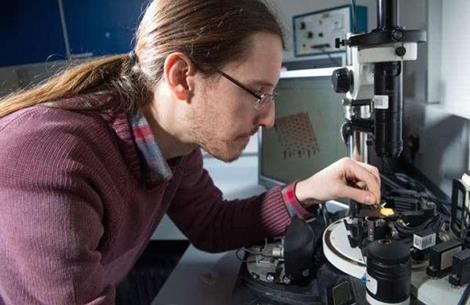The Science of Watching Paint Dry
New research shows a new physical mechanism that separates particles according to their size during the drying of wet coatings.
#curing

Researchers from the University of Surrey in collaboration with the Université Claude Bernard Lyon used computer simulation and material experiments to show how when coatings with different sized particles (such as paints) dry, the coating spontaneously forms two layers.
Featured Content
This mechanism can be used to control the properties at the top and bottom of coatings independently, which could help increase performance of coatings across industries as diverse as beauty and pharmaceuticals.
“When coatings such as paint, ink or even outer layers on tablets are made, they work by spreading a liquid containing solid particles onto a surface, and allowing the liquid to evaporate,” said Dr Andrea Fortini, of the University of Surrey and lead author. “This is nothing new, but what is exciting is that we’ve shown that during evaporation, the small particles push away the larger ones, remaining at the top surface whilst the larger are pushed to bottom. This happens naturally.”
The team is continuing to work on such research to understand how to control the width of the layer by changing the type and amount of small particles in the coating and explore their use in industrial products such as paints, inks, and adhesives
The funding for this work comes from the EU project BARRIERPLUS, which aims at the reduction of environmentally damaging volatile organic compounds in paints.
RELATED CONTENT
-
Improving Transfer Efficiencies in Coating Operations
There are many methods for addressing electrostatic grounding in metal painting processes, and Tim Ulshafer from Mueller Electric says the best method for your process is a simple and worthwhile exercise.
-
Masking for Surface Finishing
Masking is employed in most any metal finishing operation where only a specifically defined area of the surface of a part must be exposed to a process. Conversely, masking may be employed on a surface where treatment is either not required or must be avoided. This article covers the many aspects of masking for metal finishing, including applications, methods and the various types of masking employed.
-
Drivers of Change
Is your metal finishing software ready for an upgrade?


















